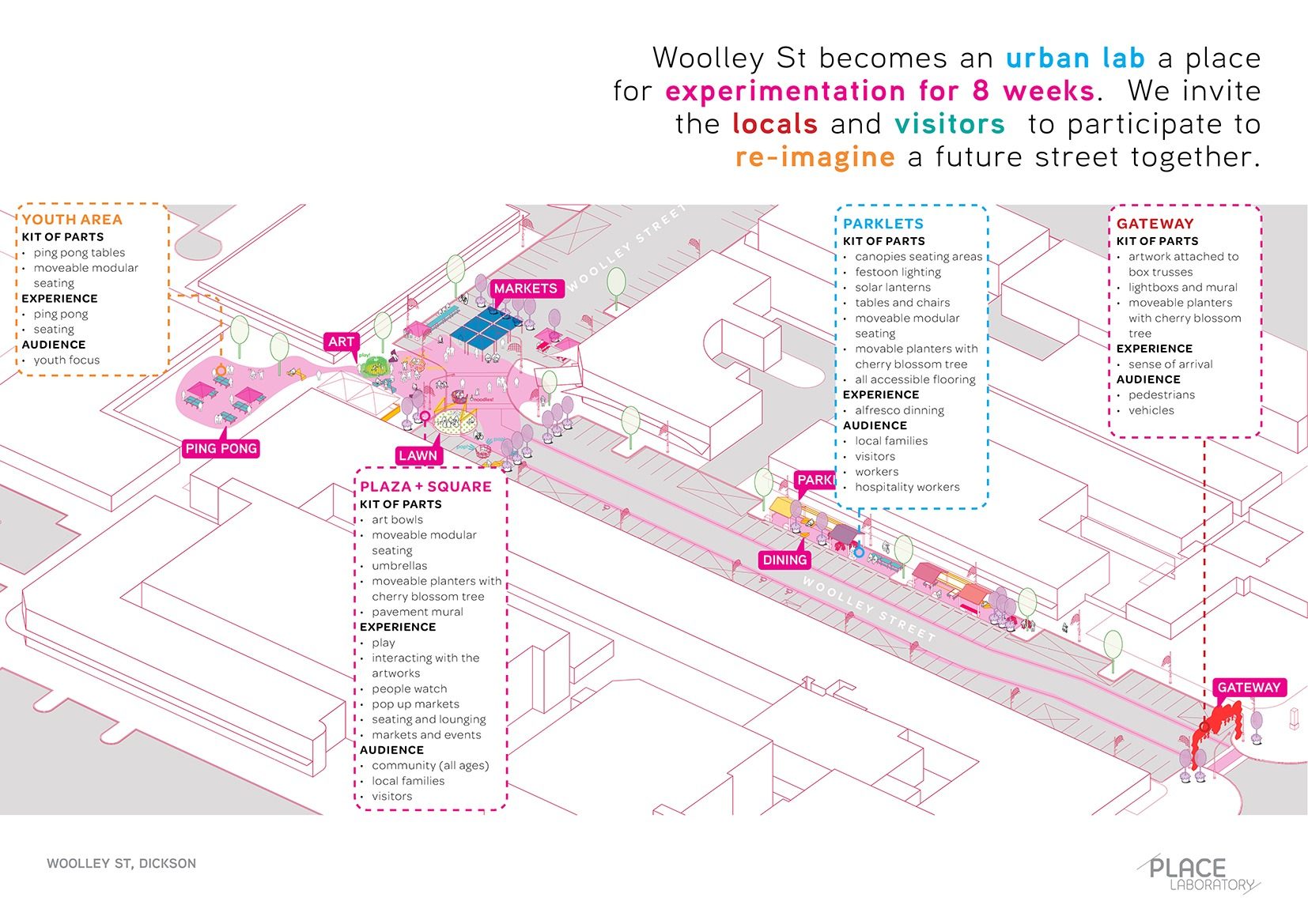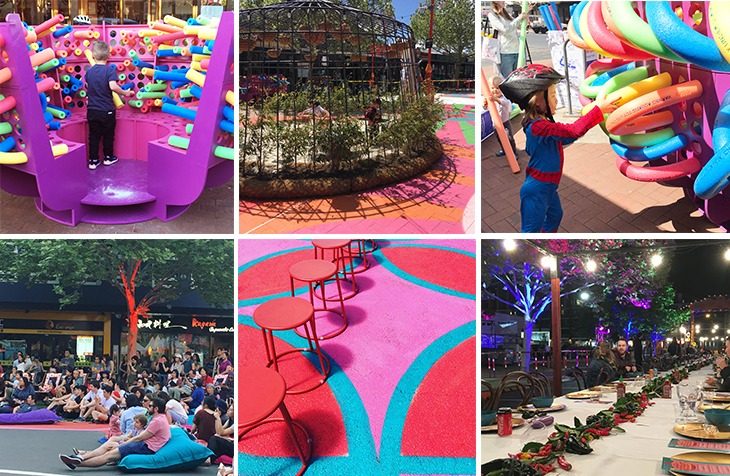Not only is the temperature in Canberra warming up, the vibe in Woolley Street is picking up and getting excited.
The Woolley Street project is one of our place-led projects delivered through a bottom-up planning process, rather than the traditional process which usually starts with the project brief moving through design to construction. The Woolley Street Project is just the first step of renewing the Dickson precinct, one of the major dining centres of Canberra. The temporary project intended to create a pedentrianised street with opportunities to sit, eat, play and gather.
Place measurement is a key component of this project. Quick win projects are not just spices added to activate a place, but an important tool to learn about community needs and aspirations within a specific urban and cultural context. The project was intentionally delivered in phases, from initial small changes to ultimately transforming the car dominant street into a more pedestrian friendly street plaza, enabling the hosting of regular weekend public events and everyday uses. The purpose was to make each step measurable, providing evidence and lessons for the long term transformation. From some time before the installation, we have been conducting street interviews on a nearly weekly basis in Woolley Street. Even positive change often sound scary, but the shifting of people’s attitudes about change is another interesting finding which came out of this project.
In many community workshops, we often show people case studies of projects converting streets into pedestrian oriented thoroughfares in European cities. But can just images and words really change people’s attitudes and perceptions towards a less car dominant street environment? As Hugh Mackey said in his book, Australia Reimagined, “attitude rarely leads to behaviour, it’s the environment we live in that influences our behaviour, and those patterns of behaviour, in turn shape our attitude.” The Woolley Street project created a temporary environment where people can experience such behavior changes.Where a strong driving culture exists, the pressure to maintain a large number of parking spaces is so strong, the quantity and quality of public space suffers as a result. Driving was the primary choice of transport for most Canberrans, 74.9% drove to work according to a 2017 survey. We started street interviews two weeks prior to project commencement, and as we expected, most people were against changing the car parking, if not for increasing parking space. Most people though, also thought the street was unattractive and lacked public amenities.
The project proposed a reduction in the parking area and width of the roadway to make space for a public alfresco dining area. We were expecting to get slammed by public opinion. Surprisingly, at the post-installation survey, 81% of people supported the the reduction of parking in order to increase public seating, with some people even suggesting to remove car parking completely to create a pedestrian only street. The contrasting attitudes between before and after the project seemed to come from two completely different communities.
Another interesting observation was people’s willingness to participate in the interview increased significantly as the project progressed. We’ve noticed people were less enthusiastic about the idea of improving the street whilst nothing was happening. Before the project, approximately 70-80% of the people we approached for the interview declined to answer any questions. In contrast, once the project started to roll out, noticeably more people, perhaps up to 90%, were willing to talk to us and give opinions about the street. Up to this week, 98.3% respondents said they felt the street had improved.
At Place Laboratory, we welcome change as part of our core values. We are constantly exploring different design processes to empower and include the community, creating better places.

